#EMRSoftware
Explore tagged Tumblr posts
Photo
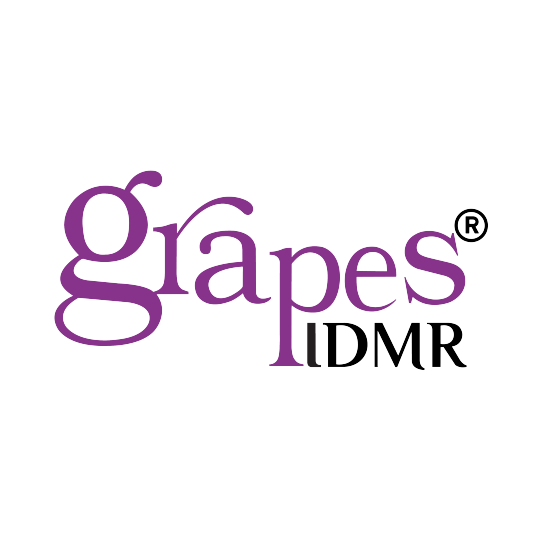
the Best Electronic Health Record Software in India | grapes idmr (on Wattpad) https://www.wattpad.com/story/385498617-the-best-electronic-health-record-software-in?utm_source=web&utm_medium=tumblr&utm_content=share_myworks&wp_uname=jeraldnepoleon The healthcare industry is undergoing a significant transformation, with technology playing a pivotal role in improving patient care, increasing efficiency, and reducing operational costs. One of the most important innovations in this revolution is the Best Electronic Health Record software, which has become a cornerstone for modern healthcare management. Among the various solutions available, Grapes IDMR, developed by Grapes Innovative Solutions, stands out as one of the most comprehensive and efficient Electronic Health Record (EHR) software in India...
#emrsoftware#grapesidmr#healthcare#hmssoftware#hospitalmanagementsoftware#jeraldnepoleon#software#books#wattpad#amwriting
2 notes
·
View notes
Text

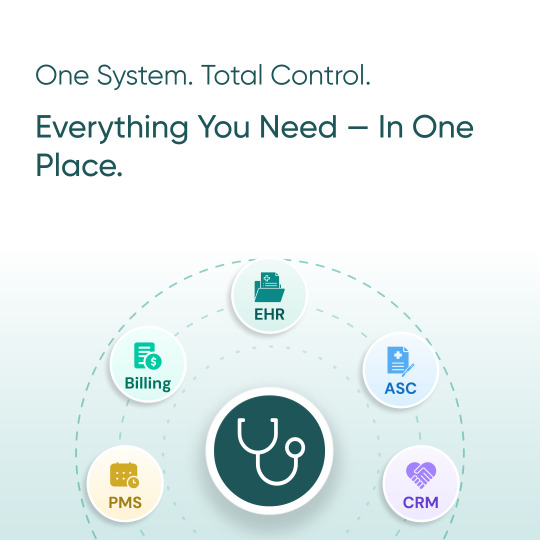
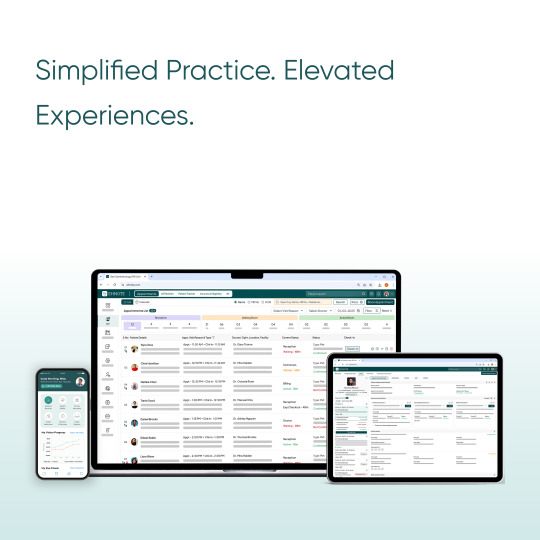
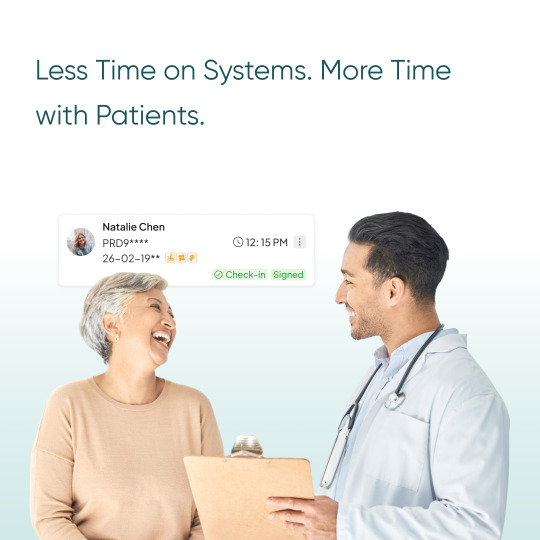

Join EHNOTE at ASCRS-ASOA 2025 from April 25–28 at the Los Angeles Convention Center — Booth #1857.
✅ Live demos
✅ 1:1 expert chats
✅ Discover how to simplify your eye care practice with one powerful system.
📅 Don’t miss out — schedule your visit now! :
#EHNote#ASCRS2025#OphthalmologyEHR#SmartDecisions#EyeCareInnovation#ophthalmophthalmologyemrsoftware#ophthalmologyehrsoftware#ophthalmology#ophthalmologists
#ascrs#ascrs2025#ophthalmology#ophthalmologemr#emrsoftware#ehrsoftware#doctor#patientcare#losangeles#California#usdoctors
0 notes
Text
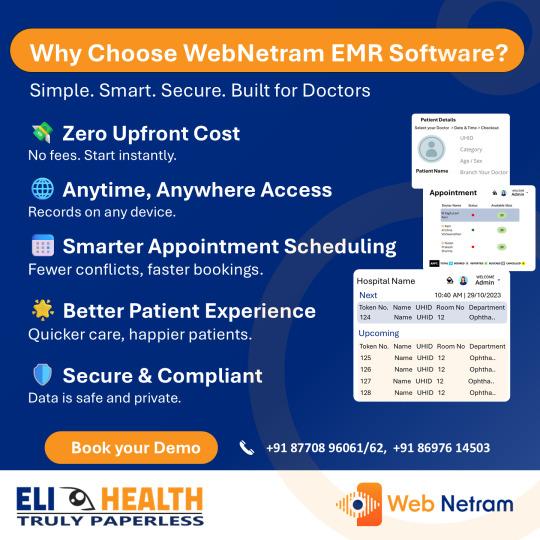
#Why Choose WebBetram EMR Software for Your Eye Care Clinic? 👁️💻#Designed with eye care professionals in mind#Webnetram EMR makes your practice faster#smarter#and paperless.#EyeCareSoftware#OphthalmologyEMR#Webnetram#EMRforDoctors#ClinicManagement#OphthalmologistTools#EMRSoftware#DoctorTech#EyeClinicSoftware#MedicalSoftware#PaperlessClinic#DigitalHealth#SmartClinic#DoctorLife#HealthcareIT#EMRIndia#ClinicAutomation#OphthalmologyClinic
0 notes
Text
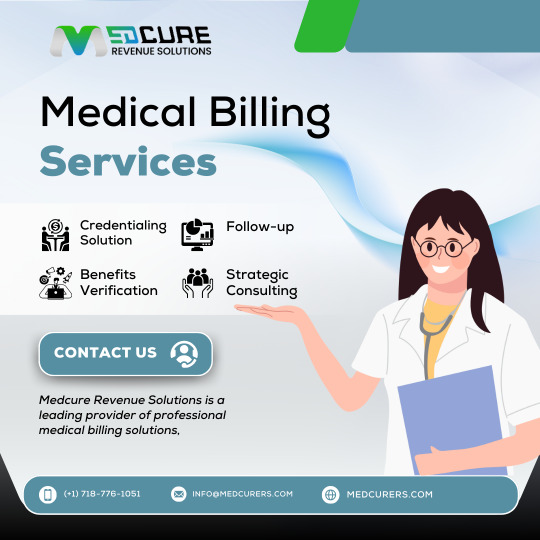
🌟 Elevate your healthcare practice with our Medical Billing and Coding Services! 🏥 At Medcure RS, we specialize in seamless RCM (Revenue Cycle Management) that enhances your cash flow and efficiency.
Our expert team ensures accurate medical coding and billing services while optimizing your Electronic Health Records Software for better patient care. Trust us to handle your electronic medical record systems with precision and professionalism.
Join the leading medical billing company today and experience the difference!
👉 Learn more at Medcure RS
#MedicalBilling#MedicalCoding#RCM#ElectronicHealthRecords#MedicalBillingCompany#HealthcareSolutions#MedicalBillingServices#EMRSoftware#BillingAndCoding
#MedicalBilling#MedicalCoding#RCM#ElectronicHealthRecords#MedicalBillingCompany#HealthcareSolutions#MedicalBillingServices#EMRSoftware#BillingAndCoding
0 notes
Text
Orthopedic Software Market Strategic Assessment: Market Size, Share, Growth Projections
The global orthopedic software market size is expected to reach USD 607.0 million by 2030, registering a CAGR of 5.8% from 2024 to 2030, according to a new report by Grand View Research, Inc. This is attributed to the rising technological advancements in orthopedic surgeries and the increasing prevalence of orthopedic conditions such as arthritis, joint pain, and fractures. According to the CDC, around 78 million people aged 18 years and older are anticipated to have doctor-diagnosed arthritis by 2040. Moreover, the rising geriatric population is expected to drive the demand for efficient and cost-effective orthopedic surgical planning software from 2023 to 2030.

One of the key factors fueling market growth is the rising prevalence of orthopedic conditions like arthritis, cubital tunnel syndrome, and lower back pain. In addition, the aging population, which is more vulnerable to these diseases, is driving the market growth. For instance, according to a National Osteoporosis Foundation article, osteoporosis, a bone disease, makes bones fragile & more prone to breaking. Around 44 million Americans have inadequate bone density, and 10 million have osteoporosis, putting them at higher risk. Moreover, about 54 million Americans, or half of all people aged 50 and over, are at risk of fractures caused by accidents and trauma. Accordingly, the demand for Minimally Invasive (MI) surgeries among patients & healthcare professionals is fueling the market growth.
Orthopedic Software Market Report Highlights
Based on product, the orthopedic EHR segment dominated the market in 2023 with a share of 25.43%. The growth is attributed to recent favorable changes in the orthopedic EHR industry, including new expansion activities, product launches, rising mergers, and acquisitions. For instance, the U.S. Orthopedic Alliance (USOA) and Allscripts Healthcare Solutions formed a strategic partnership in January 2021. Furthermore, the increasing digitalization rate has significantly boosted the overall demand for EHRs
Based on the mode of delivery, the web/cloud-based segment is anticipated to dominate the market over the forecast period. It held the leading share of 86.56% in 2023, owing to the reliability and quick processing times of web/cloud-based systems. Furthermore, cloud-based solutions can simplify the process of obtaining available information remotely. This segment has expanded due to increased data storage, communication capacity, accessibility, reduced IT expenses, scalability, and other benefits
Based on application, the orthopedic surgeries segment is anticipated to dominate the market in 2023 and hold the leading share of 59.82% in 2023. The need for data sharing and storage is expected to increase significantly in the upcoming period amid the growing number of orthopedic operations. As a result, the use of orthopedic software is anticipated to increase in medical facilities and other specialized settings
In 2023, North America held the largest share of 43.01% in the market, driven by the availability of advanced infrastructure, high levels of digital literacy, and policies that permit the implementation of orthopedic software such as EHRs. For instance, the Federal Health IT Strategic Plan 2020-2025, which the federal government unveiled in May 2020, requires healthcare providers to use EHRs effectively, likely to boost the regional market throughout the forecast period
The growing demand for technologically advanced orthopedic software/platforms has led to intense competition among market players. Key companies actively undertake various strategic initiatives to grow in the market. For instance, in March 2022, Allscripts Healthcare, LLC launched Expo, an EHR technology that provides a broad range of integrated solutions for practice management
For More Details or Sample Copy please visit link @: Orthopedic Software Market Report
Integrating artificial intelligence (AI) powered technologies into existing software and launching novel AI-powered orthopedic solutions also fuels market growth. For instance, in May 2023, Smith+Nephew enhanced its digital surgery and robotics portfolio with two new products: Personalized Planning powered with AI & the RI.INSIGHTS Data Visualization Platform. The CORI surgical system now features RI.KNEE ROBOTICS v2.0, which integrates AI-powered Personalized Planning. This advancement allows surgeons to set initial implant placement during total knee procedures based on AI-guided reference values and preferences for patient-specific implant deformities.
AI-powered technologies enhance the capabilities of orthopedic software by providing advanced analytics, predictive modeling, and personalized treatment planning. These technologies enable more accurate diagnosis and surgical planning, reduce the risk of complications, and improve patient outcomes. In addition, AI can streamline administrative processes, such as scheduling and patient management, making healthcare delivery more efficient.
Moreover, various software has been developed to evaluate orthopedic implant fixation and bone segment motion. For instance, according to an article published by HospiMedica International, model-based roentgen stereophotogrammetric analysis software has been developed to evaluate the fixation of orthopedic implants and the movement of bone segments. This software was the first to use calibrated stereo X-ray pictures to determine the in vivo 3D position and/or relative motion of metal implants, marker beads, and/or bone segments.
The market players undertake several strategic initiatives to grow and sustain. For instance, In January 2024, athenahealth, Inc. announced that New England Orthopedic Surgeons (NEOS) would implement athenahealth’s athenaOne, a cloud-based integrated revenue cycle management, EHR, and patient engagement suit. Moreover, in March 2022, Allscripts Healthcare, LLC launched Expo, an EHR technology that provides a broad range of integrated solutions for practice management.
List of Key Players in the Orthopedic Software Market
IBM
CureMD Healthcare
GreenWay Health LLC
Brainlab AG
Medstrat
Materialise
NextGen Healthcare LLC
DrChrono, Inc
Allscripts Healthcare, LLC
eClinicalWorks
athenahealth (acquired by Hellman & Friedman and Bain Capital)
Stryker
For Customized reports or Special Pricing please visit @: Orthopedic Software Market Analysis Report We have segmented the global orthopedic software market report based on product, mode of delivery, application, and region.
#OrthopedicSoftware#HealthcareIT#MedicalSoftware#OrthopedicCare#EMRSoftware#EHRSoftware#OrthopedicSolutions#SurgicalSoftware#HealthcareTechnology#OrthopedicPractice#MedicalTechnology#PatientManagement
0 notes
Text
youtube
Meddilink EMR Software
Meddilink is a NextGen cloud-based platform to cater all your ART digitalization needs. It unlocks the potential of ART business by improving patient experience and transforming business operations through intelligent insights and control.
#ivf#IVFSOFTWARE#EMRSOFTWARE#EMR#HMIS#EHR#Meddilink#medart#fertilitysoftware#infertility#HMS#Youtube
0 notes
Text

Navigating the Digital Doctor's Office: Electronic Medical Records Unveiled
Delve into the world of Electronic Medical Record Systems – your healthcare superheroes in digital form! Forget the days of shuffling endless paper files; EMRs are here to save the day with their digital magic. Imagine never losing a prescription again or decoding the doctor's handwriting.
0 notes
Text

Feeling like chained to your clinical desk? Break free from the shackles and access your patient records, appointments, reports, and many other details while on the go. Update records, order investigation, upload ocular images, and do more with your mobile EHR.
get a detailed walk-through of EHNOTE's Mobile EMR and gain complete FREEDOM! : https://ehnote.com/ehr/schedule-online-demo-calendly
visit : https://ehnote.com/ehr/ophthalmology-emr-ehr-software
[ EHR software, mobile EHR, software, EMR software, Mobile EMR ]
ehrsoftware #emrsoftware #healthtech #healthsoftware #mobileemr #mobileehr #usa #us #doctor #clinic #medicalprofessional
#ophthalmology#mobileemr#emrsoftware#ehrsoftware#practice management software#emr#ehr#medical practice management software#mobile#mobile software
0 notes
Text
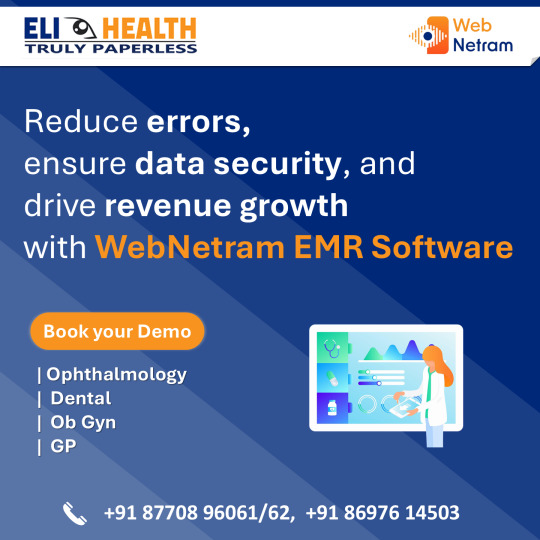
#elihealthemr#healthcaresoftware#healthcaresoftware hashtag#elihealthsoftware#emrsoftware#electronichealthrecords#eyecare#obgynemr#healthcare#ophthalmology#cloudemr#netramemr#patientengagement#dental#webnetram
0 notes
Text
What are the disadvantages of the patient registration module in the hospital?
While the patient registration module in a hospital's Healthcare Management System, especially in the context of the best healthcare management system or a smart hospital management system, offers numerous advantages, it's essential to be aware of potential disadvantages and challenges associated with its implementation. Here are some of the disadvantages:
Complex Implementation: Integrating a patient registration module into an existing Healthcare Management System, especially in the case of a smart hospital management system, can be complex and time-consuming. It may require significant IT resources and expertise.
Cost: The initial investment in implementing and maintaining the patient registration module, particularly in the context of the best healthcare management system with advanced features, can be substantial. It may also involve ongoing licensing and maintenance costs.
User Training: Hospital staff, especially those not accustomed to using technology, may require training to effectively use the patient registration module. This can lead to a temporary decrease in productivity during the training period.
Data Entry Errors: While the module can reduce data entry errors, it is not entirely foolproof. Inaccurate data entry or improper use of the system can lead to incorrect patient information, potentially affecting patient care.
Technical Issues: Like any software, the patient registration module may experience technical glitches, downtime, or compatibility issues with other hospital systems. These issues can disrupt operations and impact patient care.
Data Security Concerns: As patient registration modules store sensitive patient information, there is a risk of data breaches or cyberattacks. Ensuring robust cybersecurity measures is crucial to mitigate these concerns.
Patient Privacy and Consent: Collecting and managing patient data in a digital format raises concerns about patient privacy and obtaining informed consent for data usage. Compliance with regulations like HIPAA is essential.
Resistance to Change: Healthcare professionals and administrative staff may resist the shift to digital patient registration processes, particularly in more traditional healthcare settings. This resistance can hinder the system's adoption and effectiveness.
Customization Challenges: Tailoring the patient registration module to meet the specific needs of a hospital, particularly in a smart hospital management system with unique requirements, can be challenging. Customization may require additional time and resources.
Maintenance and Updates: Regular maintenance and updates are necessary to keep the system running smoothly and to address evolving healthcare regulations. Failure to keep the system up to date can lead to operational issues and compliance concerns.
Interoperability Challenges: Achieving seamless interoperability with other systems and healthcare providers can be difficult. Incompatibility issues can hinder the module's effectiveness in sharing patient data.
Patient Data Accuracy: While the system aims to improve data accuracy, errors can still occur, particularly if patients provide inaccurate information during registration.
In summary, the patient registration module in a hospital's Healthcare Management System, even in the context of the best healthcare management system or a smart hospital management system, is not without its challenges. These may include complex implementation, cost, user training, data entry errors, technical issues, data security concerns, patient privacy and consent, resistance to change, customization challenges, maintenance and updates, interoperability challenges, and patient data accuracy. Hospitals must carefully consider and address these potential disadvantages to ensure the module's successful implementation and operation.
#HealthcareManagementSystem#GrapesIDMR#HealthcareAutomation#HospitalManagement#EMRSoftware#DigitalHealthcare#MedicalInnovation#HealthcareTechnology#PatientCare#HealthcareData#InnovativeSolutions#MedicalImageData#HealthcareEfficiency#HealthTech#HealthcareRevolution#AdvancedEMR#HealthcareInnovation#HospitalOperations#HealthcareIT#UserFriendlyInterface#HMS#HealthcareManagementsystem#Healthcare#HospitalManagementSystem#BSA#GrapesHMS#MIS#EMR#Grapes#HealthcareManagementSystemsoftware
0 notes
Text
0 notes
Text
Unlock Efficient Healthcare with Top Rated EMR Systems

In a world where healthcare delivery is evolving rapidly, Electronic Medical Records (EMR) systems are no longer a luxury—they’re a necessity. From reducing paperwork to improving patient care coordination, EMR software helps providers work smarter and deliver better outcomes. If you’re looking to implement one of the top rated EMR systems, smartData offers robust, customizable solutions that align with modern healthcare needs.
Why EMR Systems Matter More Than Ever
EMR systems streamline the collection, storage, and retrieval of patient information, helping providers make informed decisions in real time. They’re designed to:
Eliminate paperwork and manual recordkeeping
Reduce medical errors
Improve patient safety
Enhance interoperability between departments and providers
Enable remote access to medical records
What Makes smartData's EMR Software Stand Out?
smartData delivers feature-rich, scalable, and secure EMR systems tailored for healthcare providers, clinics, and hospitals. Here’s why their solutions are considered among the top rated EMR systems:
✅ Customizable Workflows Adaptable to suit different specialties like cardiology, dermatology, orthopedics, behavioral health, and more.
✅ HIPAA-Compliant Security Data privacy is guaranteed with advanced security protocols and encrypted storage.
✅ Seamless Integration Smooth integration with lab systems, pharmacies, billing platforms, and insurance providers.
✅ User-Friendly Interface Intuitive dashboards and easy navigation to improve staff efficiency and reduce training time.
✅ Cloud-Based & On-Premise Deployment Choose a model that fits your operational and compliance needs.
✅ Telehealth & E-Prescription Ready Stay ahead with built-in tools for virtual care, remote monitoring, and digital prescriptions.
Designed for Modern Healthcare Providers
Whether you're a solo practitioner or a multi-location hospital, smartData’s EMR solutions are crafted to grow with your organization. Their systems support:
Patient charting & documentation
Appointment scheduling
Lab integrations & imaging
Billing & revenue cycle management
Patient portals for engagement
A Smarter Approach to Healthcare Delivery
What sets smartData apart is its deep domain expertise and client-focused approach. Their EMR systems are built not just for functionality, but for transforming healthcare delivery through digital innovation.
Ready to elevate your practice with one of the top rated EMR systems? 👉 Explore smartData’s EMR Software and schedule a consultation today.
#topratedemrsystems #EMRSoftware #HealthIT #ElectronicMedicalRecords #HealthcareSolutions #DigitalHealth #smartData #CustomEMR
0 notes
Text

"1st Providers Choice" offers the best EMR Best Urgent Care EMRsoftware. The days of preserving paper-based medical documentation are long gone; instead, use urgent care EMR software to organise all of your old and new medical records in a paperless manner, lowering the risk of document loss. With the help of urgent EMR software, you can manage all of the necessary things such as prescriptions, doctor's guidelines, medical history, and so on in a password-protected manner. Please follow the link https://1stproviderschoice.com/emr-for-practices-clinics/urgent-care-emr.php.
0 notes
Link
As technology advances, healthcare companies get access to greater tools and information. While such advancements clearly benefit clinicians, data created by this new technology is constantly segregated by outmoded electronic health record systems, stifling much of the potential good effects.
#healthcare#medicalsoftware#ehr#emr#ehrsoftware#emrsoftware#Interoperability#doctor doom#healthcareproviders
2 notes
·
View notes
Text
Weathering the Storm: How Digitalization Through Grapes IDMR Transforms Monsoon Healthcare Challenges
The arrival of monsoon season across South Asia and the Middle East brings not only refreshing rains but also a significant surge in healthcare demands. As humidity levels rise and seasonal infections spread, hospitals face unprecedented patient volumes, stretched resources, and logistical challenges. In this critical period, digital transformation isn’t just convenient — it’s essential for maintaining quality care. Grapes’ Integrated Digital Medical Records (IDMR) system offers a comprehensive solution designed specifically to tackle monsoon-related healthcare hurdles. The Monsoon Healthcare Challenge: Understanding the Seasonal Impact

The Monsoon Healthcare Challenge: Understanding the Seasonal Impact
When monsoon clouds gather and the first raindrops fall, healthcare facilities prepare for an influx of patients. Hospital administrators know the pattern well — a 30–40% increase in outpatient visits, dominated by waterborne diseases, respiratory infections, and vector-borne illnesses like dengue and malaria. Traditional paper-based systems buckle under this pressure, creating bottlenecks in registration, diagnosis, and treatment.
youtube
The seasonal challenges extend beyond just patient numbers. Humid conditions affect paper record preservation, while transportation difficulties can delay staff arrivals and patient access. For pediatric departments especially, monsoon season represents the year’s busiest period, with children particularly vulnerable to seasonal infections.
Digital Transformation: The Umbrella Against Monsoon Healthcare Storms
Grapes IDMR provides a powerful digital shield against monsoon healthcare challenges through comprehensive digitalization of hospital operations. This transformation touches every aspect of healthcare delivery:
1. Streamlined Patient Flow Management
The first raindrops often trigger the first wave of hospital visits. Grapes' digital ecosystem transforms this potentially chaotic influx into an orderly process:
Online Appointment Booking: Patients can secure consultation slots from home, preventing crowded waiting areas and reducing infection risks.
QR Code Registration: Quick, contactless patient registration eliminates paper forms and reduces waiting times by up to 70%.
Digital Queue Management: Real-time updates on waiting times allow patients to arrive just when needed, creating more comfortable experiences during inclement weather.
These digital innovations ensure that even during peak monsoon patient surges, hospitals maintain organization and efficiency without compromising care quality.
2. Enhanced Clinical Documentation and Access
Monsoon season often tests the limits of traditional medical record systems. Physical files become difficult to transport between departments, suffer humidity damage, and create information bottlenecks. Grapes IDMR eliminates these issues through:
Centralized Electronic Medical Records: Instant access to patient histories regardless of department location or previous visit timing.
Digital Diagnostic Integration: Test results flow directly into patient records, eliminating paper transfers vulnerable to monsoon conditions.
Cloud-Based Redundancy: Critical patient data remains accessible even during power outages or connectivity challenges common during heavy storms.
For hospitals managing seasonal ailments, this means clinicians can quickly identify patterns, access previous treatment protocols, and make informed decisions with complete medical contexts at their fingertips.
3. Teleconsultation: Healthcare Beyond Physical Boundaries
Perhaps the most transformative aspect of Grapes' system during monsoon season is its robust teleconsultation platform. This feature:
Enables patients with minor symptoms to receive professional guidance without risking travel during heavy rains
Allows follow-up consultations remotely, reducing unnecessary hospital visits
Provides specialized pediatric teleconsultation, protecting vulnerable children from exposure to hospital environments during infection peaks
Includes digital prescription services integrated with pharmacy management
One hospital implementing Grapes' teleconsultation reported a 45% reduction in unnecessary emergency department visits during last year's monsoon season, significantly reducing waiting times for those truly needing in-person care.
Beyond Technology: The Human Element in Digital Transformation
Successful digital transformation during challenging seasons requires more than just software implementation. Grapes understands this crucial fact and incorporates comprehensive training and support:
Implementation Training Customized for Seasonal Challenges
Grapes doesn't just provide technology—it ensures healthcare staff can leverage these tools effectively when they're needed most. The company's implementation approach includes:
Specialized training modules for monsoon-specific workflows
Simulation exercises mimicking high-volume scenarios
Staff preparation for common monsoon-related diagnoses and treatment protocols
Technical support teams on standby during peak season periods
This human-centered approach ensures that when patient volumes surge, staff confidence in digital tools surges alongside them.
Measurable Impact: The Difference Digitalization Makes
Hospitals utilizing Grapes IDMR during monsoon seasons report significant operational improvements:
Registration time reduction: Average patient registration time drops from 12 minutes to under 3 minutes
Wait time improvement: Overall wait times reduced by approximately 60%
Resource optimization: Staffing efficiency improves by 25-30% through better allocation based on digital tracking
Documentation quality: Diagnostic accuracy increases through comprehensive electronic history access
Patient satisfaction: Survey scores typically rise 15-20% during peak seasons compared to pre-implementation metrics
These metrics translate to real-world improvements in patient care, staff satisfaction, and overall hospital efficiency during the most challenging seasonal period.
Environmental Benefits: Sustainability Through Digitalization
Beyond operational efficiency, Grapes' digital transformation offers environmental benefits particularly relevant during monsoon seasons:
Paper reduction: A mid-sized hospital can eliminate over 100,000 sheets of paper monthly
Reduced physical storage requirements: No need for extensive record rooms vulnerable to humidity damage
Lower transportation footprint: Fewer patients traveling for routine consultations means reduced carbon emissions
Resource conservation: Digital workflows optimize resource utilization, reducing waste
This alignment of healthcare efficiency with environmental responsibility represents healthcare's future—systems that care for both patients and the planet.
Preparing for Next Season: The Implementation Roadmap
For healthcare facilities contemplating digital transformation before the next monsoon arrives, Grapes offers a structured implementation approach:
Assessment: Evaluation of current workflows and monsoon-specific pain points
Customization: Tailoring of the IDMR system to address identified challenges
Training: Comprehensive staff preparation, with special attention to seasonal surge handling
Phased Implementation: Strategic rollout timed to ensure stability before peak season
Continuous Improvement: Ongoing refinement based on performance metrics and feedback
This methodical approach ensures hospitals can confidently face monsoon challenges with digital tools that enhance rather than complicate care delivery.
Conclusion: Transforming Challenges into Opportunities
As climate patterns evolve and seasonal healthcare demands intensify, digital transformation through systems like Grapes IDMR represents not just a technological upgrade but a fundamental rethinking of healthcare delivery. By embracing these solutions, hospitals transform monsoon challenges into opportunities for improved efficiency, enhanced patient experiences, and more sustainable operations.
Just as monsoon rains ultimately nourish the earth despite temporary disruptions, digital transformation may require initial adaptation but ultimately creates more resilient, responsive healthcare systems capable of weathering any storm. The future of monsoon healthcare isn't about struggling against seasonal challenges—it's about harnessing digital power to transcend them entirely.
Frequently Asked Questions
How does digitalization specifically help hospitals during monsoon season?
Digitalization through systems like Grapes IDMR helps hospitals handle increased patient volumes by streamlining registration through QR codes, enabling remote consultations to reduce unnecessary visits, providing electronic access to medical records regardless of physical constraints, and offering data-driven insights for resource allocation during peak demand periods.
What types of healthcare facilities benefit most from Grapes IDMR during seasonal challenges?
While facilities of all sizes benefit, multi-specialty hospitals and those with busy emergency and pediatric departments see the most significant improvements, as these areas typically experience the highest surge during monsoon seasons. Clinics in flood-prone areas also gain tremendous advantages from remote consultation capabilities.
How long does it typically take to implement Grapes IDMR before a hospital sees results?
Basic implementation takes 4-6 weeks, with full optimization occurring within 3 months. For maximum benefit before monsoon season, hospitals should begin implementation at least one quarter before the expected seasonal surge to ensure staff proficiency and system optimization.
What security measures protect patient data in cloud-based systems during monsoon-related power outages?
Grapes IDMR employs end-to-end encryption, redundant data storage across multiple secure servers, automatic failover systems, and battery-backed local caching that allows continued operation even during connectivity disruptions, ensuring data security and availability regardless of weather conditions.
How does Grapes support hospitals after implementation, especially during peak monsoon periods?
Grapes provides 24/7 technical support with prioritized response times during identified peak seasons, periodic system health checks, performance optimization recommendations, specialized training refreshers before monsoon season, and dedicated customer success managers who understand regional seasonal healthcare patterns.
#HealthcareDigitalization#MonsoonPreparedness#GrapesIDMR#HospitalEfficiency#DigitalTransformation#EMRSoftware#HMSSoftware#TeleconsultationBenefits#PaperlessHealthcare#PatientExperience#CloudBasedHMS#MonsoonHealthcare#DigitalHealthcare#HospitalManagement#HealthTech#SustainableHealthcare#QRRegistration#OnlineAppointments#PatientFlow#HealthcareInnovation#SeasonalHealthcare#RemoteConsultation#HealthcareAccess#ClinicEfficiency#DataManagement#Youtube
0 notes